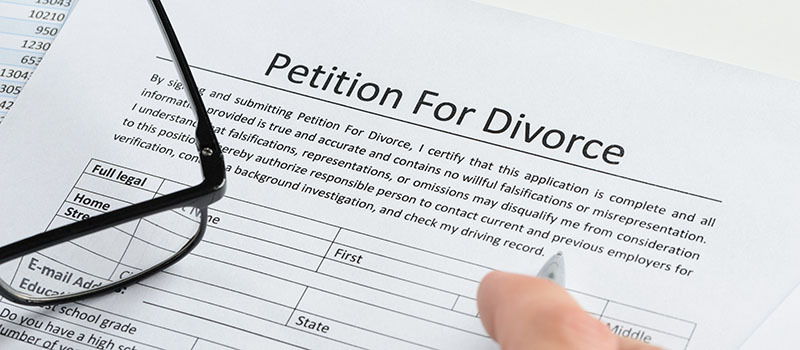No one enters a marriage with the belief that it will be temporary. Sadly, some marriages cannot be salvaged for one reason or another, hence why it’s important to know how to file for divorce.
Having that important bit of insight can save you from additional grief while you’re going through a difficult time. Knowing about the process of divorce also allows for an amicable split. On top of that, you can ensure that you’re not treated unfairly by knowing about divorce proceedings beforehand.
Divorce is not fun, but it becomes a necessity for certain couples. Hopefully, going through the process correctly will at least help minimize some of the difficulties associated with it.
How Divorce Is Different in the State of Arizona
The process of a divorce in Arizona is not completely similar to other states across the country. Arizona legally refers to the process of divorce as the dissolution of marriage.
While that is a notable distinction, it’s one that does not have much of an impact on actual cases. The restrictions placed on how long individuals must wait before they can push forward with a divorce are more impactful.
According to the Judicial Branch of Arizona, residents must wait for at least 60 days from the date of their marriage before they can go ahead with the dissolution of marriage. That’s not the only time-related requirement residents have to meet if they want to get divorced.
There is also a time requirement on being domiciled that residents must abide by. This particular requirement dictates that the parties pursuing the dissolution of their marriage must be domiciled in the state for at least 90 days prior to filing.
Being domiciled means that the involved parties have treated Arizona as their primary state of residence. The parties involved can demonstrate that they do indeed regard Arizona as the state where they live in. Registering to vote in the state is only one of those actions.
If you and your spouse have met those requirements for dissolution, either one of you can push ahead with the divorce proceedings.

The Important Matters to Discuss Prior to Divorce Proceedings
How quickly you finalize the divorce will depend on a variety of factors. Assuming that you and your soon-to-be-ex are at least on speaking terms, it’s worth discussing the following matters to speed up the dissolution process.
Custody of the Minor Children
One of the primary concerns for many parents and the law during divorce proceedings is the matter of custody. In situations where minor children are involved, the parents and perhaps the courts will have to decide the custody between the two parties.
Being on good terms with your partner will be helpful here. Together with your attorneys, the two of you can discuss a variety of topics related to your children.
You and your co-parent can discuss how you will divide parenting time. Do the two of you want to have rotating schedules, or would you prefer splitting the weekends and weekdays?
Aside from the issue of parenting time, you and your co-partner must also agree on how you make decisions related to your children. Will the parent who is currently watching over the child have the right to make all decisions during that time, or will consultations be necessary?
Discussing how to handle custody would be best for all parties involved. That way, both sides will be content with the arrangement, and the young children involved will not be subjected to conflict needlessly.
If you and your co-parent cannot agree regarding custody, the judge does that for you.
Child Support
You cannot discuss matters related to custody without also talking about child support. Child support refers to the financial obligations that parents have to their children.
It doesn’t matter whether you are the parent awarded with primary custody or the non-custodial parent, supporting your child remains your responsibility all the same. There is no set amount for how much child support you must pay, but it has to be a reasonable amount.
Co-parents can discuss exactly how much child support they will both cover ahead of the divorce proceedings. You can discuss the payments during that time. If the two of you cannot reach an agreement, the courts may step in and establish the child support terms themselves.
Maintenance or Alimony
Arizona legally refers to alimony as maintenance. Since we touched on the issue of child support above, you may be wondering why we’re bringing up alimony now.
After all, they’re both referring to the same payments, right? Well, not exactly.
Unlike child support, maintenance is not about meeting the financial needs of your child. When we’re talking about maintenance, the focus is more on maintaining a certain standard of living for your ex-partner. That’s because maintenance is supposed to cover for the unequal division of assets.
Also, in stark contrast to child support, you can spend maintenance payments however you deem appropriate. It’s also worth pointing out that alimony can take forms other than monetary payments. One partner may also provide certain goods and/or services to the other in lieu of financial support.
Maintenance is another topic you will want to discuss at length with your former spouse. Failing to reach a compromise will again lead to the courts getting involved.
Division of Assets
Last but not least, asset division is another matter you should talk to your ex-partner about. Generally speaking, the courts will seek to equally divide all the assets that the two parties acquired throughout the marriage.
The reason why it’s worth taking the time to talk to your ex-spouse first is to clarify which of your assets were obtained prior to getting married. Doing so can lead to a less contentious dissolution and greater clarity when it comes to maintenance.

The Divorce Proceedings
Whether or not the discussions with your soon-to-be ex-spouse were productive or not, you can still start the divorce proceedings. We’ll discuss how to file for divorce in this section of the article.
Step 1: Obtain and Accomplish the Petition for Dissolution of Marriage
The divorce process starts when you get your hands on a petition for dissolution of marriage. This is the document that the court will repeatedly reference throughout the divorce proceedings.
Fill the petition out carefully and make sure that you provide all the requested details. It’s also a good idea to fill out the form under the supervision of an attorney to avoid making any costly mistakes.
Step 2: Complete Other Relevant Documents
The petition for dissolution of marriage may be the most important document for completing divorce proceedings, but it’s not the only one you’ll need. In addition to that petition, you’ll also need to fill out the preliminary injunction, the summons, the sensitive datasheet, and several other documents. Once again, you should strongly consider completing those documents while in the company of an attorney to avoid errors.
Step 3: File the Petition for Dissolution of Marriage and Other Documents with the Court
After completing all the necessary documents, you can now move ahead to filing. Head over to the courthouse covering your area and look for the clerk of court. That’s the person who will accept your filing.
Note that there are also rules you need to follow when filing, so take care to abide by those. You will also pay a fee upon filing.
Once you file, you will have a case number. Remember that case number so that you can complete future proceedings to your divorce faster in the future.
Step 4: Serve the Petition for Dissolution of Marriage and Other Documents to the Other Party
With the documents completed and filed, you can now proceed to the next part of the divorce process. Service is that next part of the process, and it can be quite complex.
The purpose of serving the other party the paperwork is to give them legal notice of what you intend to do. You can go about serving the documents in one of two ways.
The first method involves enlisting the help of an unrelated party in delivery. Approach a registered process server or a law enforcement officer tasked with serving papers to make the delivery to the other party.
The other method involves having the other party sign an Acceptance of Service prior to serving the documents. To be considered valid, the signing must take place in front of a notary or a clerk of the superior court. It’s also worth pointing out here that you cannot deliver the documents yourself unless the other party signs that Acceptance of Service.
Now that you’ve served the other party with the relevant documents, you can return to the clerk of court and file the proof of service.
Also, you must serve the documents to the other party within 120 days after your initial filing.
Step 5: Wait for the Response of the Other Party
You’ve been doing all the work up to this point. Now that you’ve served the papers and filed the proof of service, you can sit back and wait for the response of the other party.
The respondent (person you served with the documents) will now be given up to 20 days to file a response to your petition if they also live in Arizona. If the person you served doesn’t live in Arizona, they will be given up to 30 days to respond following the filing.
In cases where the respondent was made aware of the petition via publication, they will have more time to respond. To be more specific, they will be given up to 60 days to respond from the day of the notice’s initial publication.
Don’t worry if the other party does not respond within the allotted period of time. The case can proceed by default if they fail to respond promptly.
Step 6: File a Consent Decree if the Two Parties Agree to the Dissolution of Their Marriage
If your ex-spouse agrees to the terms of the divorce and indicates as such in their response, you can expect smooth sailing from here. The next step will involve the two of you filing consent decrees.
Those consent decrees will detail the terms of your divorce. File those consent decrees with the court and wait for further instructions. You may need to make an additional appearance in court, but that may be to finalize the divorce.
Step 6A: Attend a Default Hearing
Let’s say that your ex-partner did not respond to the petition. In that case, they may set a default hearing to push forward with the proceedings. This hearing will allow you to get divorced by default.
You will need to file an application and affidavit of default to get divorced and send a copy of that to the other party. If the other party still fails to respond after 10 days, your divorce will push through.
Step 6B: Go to an Early Resolution Management Conference
Now, if your ex-spouse does respond and indicate that they do not agree with the terms set, the court may order the both of you to attend an Early Resolution Management Conference. That conference is supposed to help the two of you agree to the terms of your divorce.
Coming to a compromise during that conference will help speed up the divorce proceedings.
Step 6C: Take Part in a Trial
If you and your partner are still far apart on the terms, a trial may go to court. Trials can be costly and time-consuming, which is why we recommend that you speak with the other party before you start the divorce proceedings.
Step 7: The Dissolution of Marriage Is Finalized
Whether you went through a relatively civil divorce or had to go through a contentious trial, you will still finalize the divorce. The courts will also hand down the decree of dissolution of marriage at this point.
Divorces can be messy, tiring, and costly, but they may also be ultimately necessary. Make sure that the final terms of the divorce are fair to you by working with an experienced and highly skilled attorney. Contact us at the Schill Law Group and allow us to help you navigate the trying time that is your divorce.



